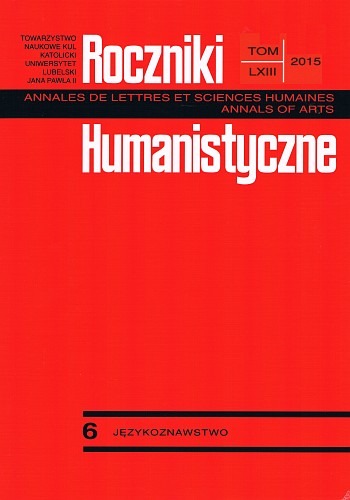Two Typologies of AP Predicates in Polish – a Comparison
Two Typologies of AP Predicates in Polish – a Comparison
Author(s): Anna BondarukSubject(s): Theoretical Linguistics
Published by: Towarzystwo Naukowe KUL & Katolicki Uniwersytet Lubelski Jana Pawła II
Keywords: individual level predicates;stage level predicates;characterizing predicates;situation-descriptive predicates;APs;density;
Summary/Abstract: The paper examines two typologies of predicates found in the literature, put forward for languages other than Polish, mostly English, Spanish, Russian, and French. The first typology goes back to Milsark (1974) and Carlson (1977), who argue for dividing predicates into individual level and stage level. The former roughly correspond to stable properties, the latter to the transient ones. The distinction has its manifestations in syntax and semantics. The paper shows that the dichotomy is also present in the case of Polish AP predicates. The other typology, that of Roy (2013), posits the distinction between characterizing and situation-descriptive adjectival predicates. The paper demonstrates that this distinction is valid for Polish, as well. The two typologies have been compared with each other. It has been argued that the IL/SL dichotomy allows us to classify a given adjectival predicate as a member of one class or the other, whereas in Roy’s (2013) typology a particular adjective can be either characterizing or situation-descriptive, depending on the context. EAs constitute a class of adjectival predicates that escapes a uniform classification in both typologies under scrutiny.
Journal: Roczniki Humanistyczne
- Issue Year: 63/2015
- Issue No: 06
- Page Range: 7-30
- Page Count: 24
- Language: English

